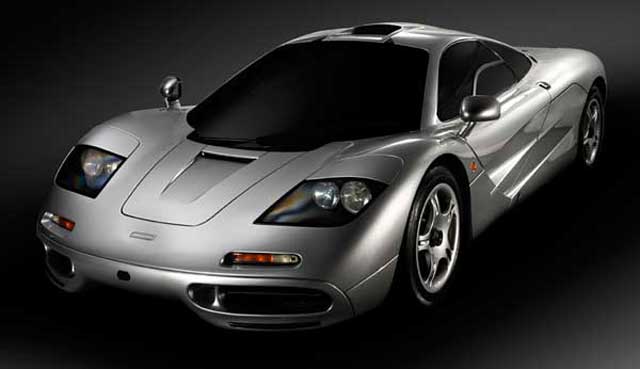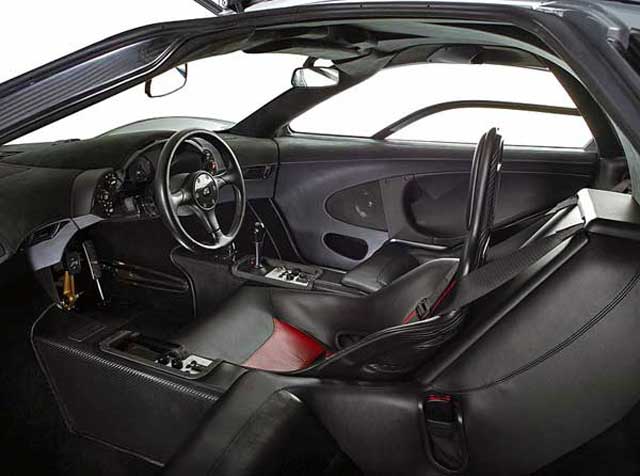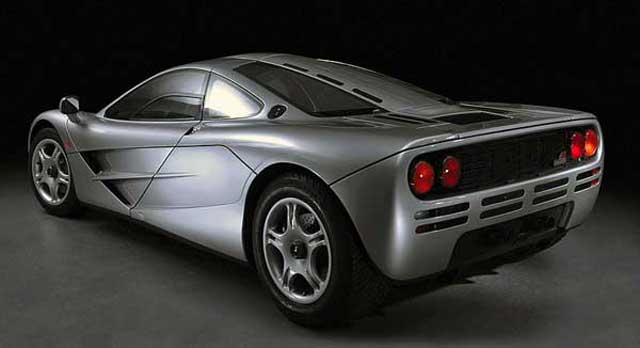January 2016
www.telegraph.co.uk - January 8, 2016

The story of the greatest supercar of the 20th century - and its creator - goes on display next month, says Matthew Carter
The story of the McLaren F1 - widely acknowledged as the greatest car of the 20th century - began in an airport lounge. With their flight from the 1988 Italian Grand Prix delayed, McLaren boss Ron Dennis, technical director Gordon Murray, marketing man Creighton Brown and Mansour Ojjeh of TAG (which part-owns McLaren) filled in the time discussing a possible McLaren road car.
Murray led the discussion, outlining how he would develop the ultimate driver's car. Above all, he wanted the first roadgoing McLaren to "be disruptive"; to upset the established supercar hierarchy.
The go-ahead was given and by March 1989 the project was made public. To achieve his goals, Murray started from scratch, using Formula One know-how to rewrite the supercar rule book. Everything - engine, chassis, even the tyres - was bespoke.
The car was certainly different. The F1 had an arrowhead seating position with the driver placed centrally, slightly ahead of the two passengers. It was the first production car to have a carbon-composite chassis, delivering great rigidity with light weight. And while a mid-engined layout was a given, Murray insisted on a naturally aspirated unit for instant throttle response.

After talks with Honda, which at the time powered McLaren's racing cars, came to nothing, McLaren turned to BMW. The German company developed an extremely compact 6.1-litre V12 that developed 627bhp and, more importantly, huge torque at low revs.
Drive was to the rear wheels via a F1-style carbon clutch to a transversely mounted six-speed gearbox. Styled by Peter Stevens, the F1 was small and, thanks to hours spent in the wind tunnel, initially devoid of ugly aerofoils. Instead, a fan-assisted airstream management system generated downforce around and under the car.
It was also devoid of driver aids - no power steering, no traction control, no brake servo.
Murray said: "We wanted the F1 to better the handling, ride comfort, performance and general dynamics of everything on the market. We benchmarked all the contemporary supercars as well as my then company car, a Honda NSX, for its ride and handling compromise.
"We achieved it all, except perhaps the steering. I chose the Sixties Lotus Elan as the steering benchmark. The F1 gets very close but doesn't better the purity of the Lotus."

A standout feature of the F1 was its central driving position
A prototype F1 was revealed at the 1992 Monaco Grand Prix, as was the cost. Yet despite its cool £634,500 price, McLaren lost money on every one produced. Today they can achieve upwards of £9 million on the rare occasions they come up for sale.
The first customer car was delivered just before Christmas in 1992 and production continued until 1998. Not that McLaren initially knew how long it would be in production, nor how many it was going to build.
Murray said: "We really didn't know what the market for the F1 would be. After we'd delivered the first cars we decided we would stop after 150. The one thing we didn't want to do was to p--- off our customers like Ferrari had done with the F40. That was meant to be a limited-run car but they went on to build something like 1,350 examples."
In the end, 106 F1s were produced and of that total only 64 were pure road cars as originally envisaged by Murray. The rest included five early prototypes, 28 F1 GTR "long-tail" race cars, three F1 GT homologation specials and five (plus one prototype) F1 LMs. These stripped and tuned versions were built to honour the car's winning performance at the 1995 Le Mans 24 Hours: the F1 took first, third, fourth and fifth.
In April 1998, racing driver Andy Wallace took the XP5 prototype to a top speed of 243mph, a world record for a production car at the time.

So, if he could do it all again, today, what if anything, would Murray change? "The only things I would upgrade are technical aspects that have improved in the last 25 years. The brakes, for example.
"I would also upgrade the headlights; the F1's lights are like glow-worms - you can't see anything over 150mph at night."
"Other than that, I wouldn't change a thing. It's still one of the fastest road cars - and is still the fastest naturally aspirated car - ever made. Those that are quicker have had to resort to huge engines and turbocharging. Even the latest generation of petrol-electric hybrid hypercars struggle to get close."
Such is the significance of the McLaren F1 that the forthcoming London Classic Car Show on February 18-21 is devoting an entire display to the car and its creator.
Curated by Murray himself, it will include five cars. What's more, there will be special exhibits showing aspects of the F1, including how the car was made and its many unique features.
Reference(s) .. www.telegraph.co.uk